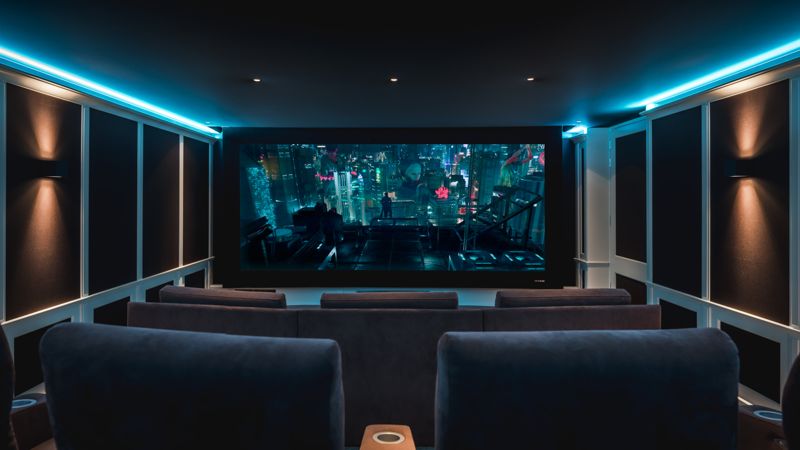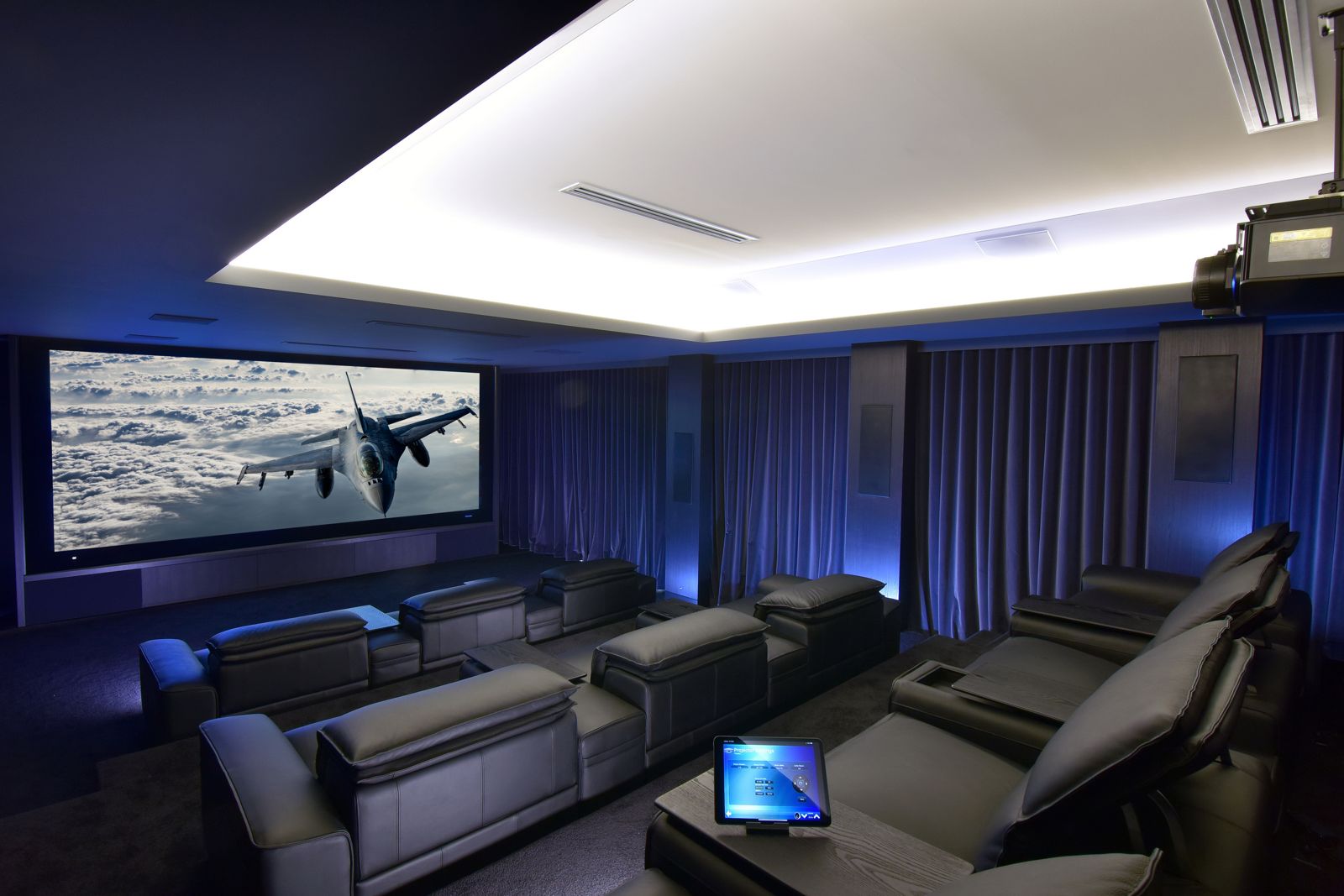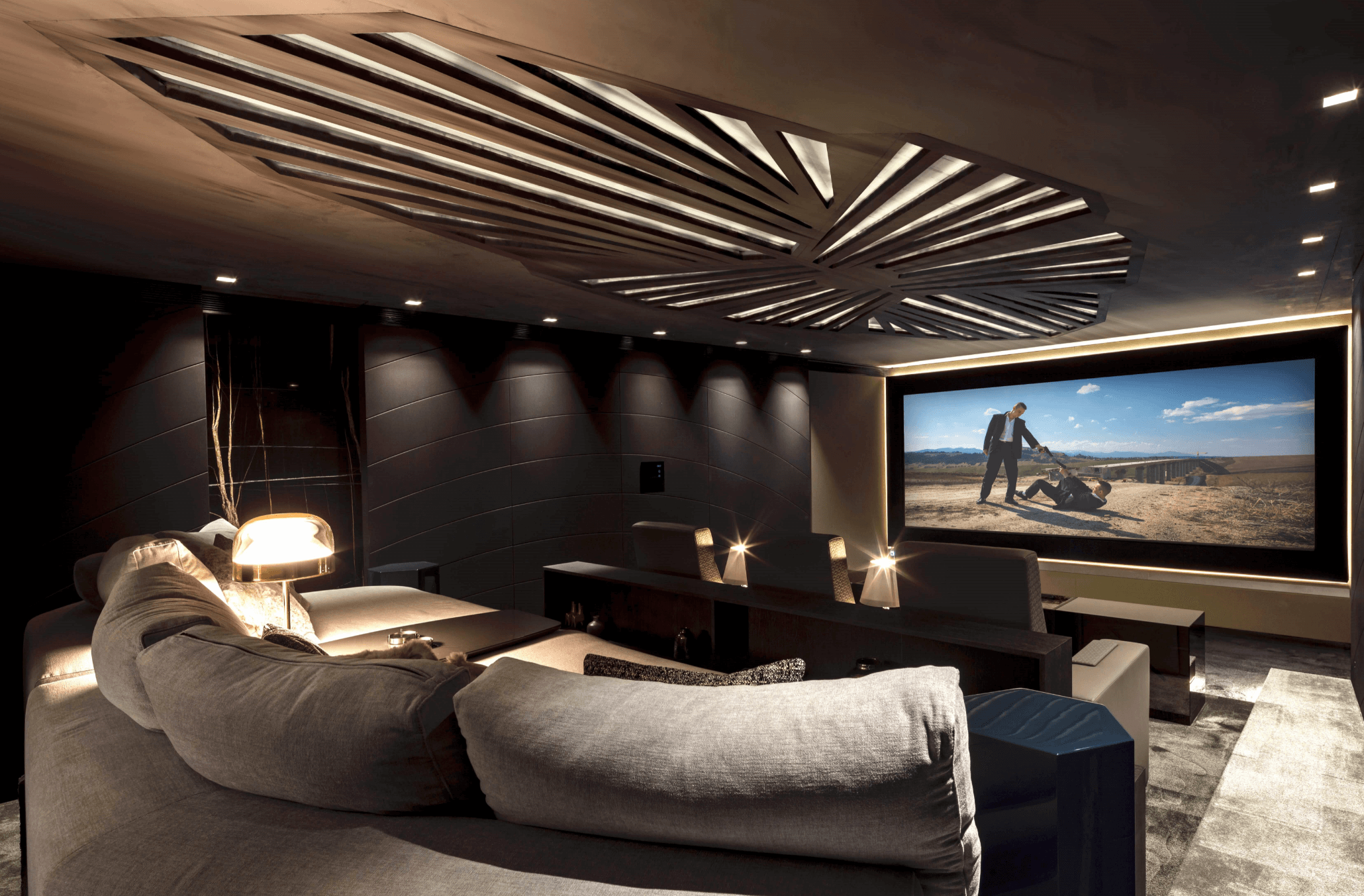
This may seem like an odd question. But it should be one of the first questions you ask yourself when designing a high-performance home theater.
Why?
Answering this question will quickly narrow down the otherwise-daunting challenge of selecting your surround processor, which will be the heart of your system. It will therefore greatly simplify your design process.
How many speakers do I need?
Let’s imagine a modestly-sized theater that has two rows of three seats each. You have already decided that you want to experience all of the latest Immersive Audio formats, including Auro-3D®, Dolby Atmos®, and DTS:X®. One of the first questions will be, “How many speakers do I need?”
One part of that decision is easy. How many rows of seats do you plan to have? It’s simple: you should have one pair of side surround speakers for each row. This allows everyone in the room to have as similar an experience as possible. So, with one row you can get away with a single pair of side surrounds, but with two rows, you should have two pairs of side surrounds.
One of the terrific things about object-oriented audio formats like Atmos and DTS:X is that they are extremely scalable technologies. That is, the same soundtrack will work on anything from an inexpensive AV receiver to a state-of-the-art surround sound preamp. This is because the sounds you hear are not simply assigned to one speaker or another. Instead, they are “audio objects,” which means that each sound you hear has information attached to it that describes where it should be in the room at any given moment. It is the job of the AVR or the surround preamp to take that information and decide how best to “render” it to the actual speakers in the room.
Obviously, if the surround preamp can feed sounds to a wider selection of speaker locations in the room, the spatial resolution of the soundtrack will improve. Ideally, the speakers themselves should disappear (sonically) as sounds move freely and smoothly around the room.
Let's go to a movie
Getting back to our imagined theater: Let’s imagine you are watching a movie about auto racing. The main character is standing by the race track, timing the lap of his driver’s car. The character remains on the screen. But another car is zooming past him while he waits for his driver to finish his lap. The sound of that other car might start on the screen, beyond the character, and then speed past him, off the left of the screen. That sound of a speeding car then travels down the left wall, only to disappear in the distance behind you.

Len Wallis Audio (Australia)
The whole idea behind this sound design is to enhance the realism of the moment and make you feel like you are there yourself, in the movie. It works. But having more speakers helps.
Understanding Spatial Resolution
Let’s imagine that your theater has seven listener-level speakers: three Screen speakers, a single pair of Side Surrounds, and another pair of Rear Surrounds. You are sitting in the left-front seat, right next to the single surround speaker on that side. You hear the sound of the car appear on the left before anyone else because you are so close to that speaker. It is also a bit too loud as it goes by, for the same reason. You also hear it somewhat longer, after anyone else, again because you are sitting so close to that speaker. In fact, if you are too close to it, it can dominate your perception of the overall soundtrack and significantly alter your experience of the movie as compared to the lucky person in the middle.
Now imagine that the same theater has eleven speakers at listener level instead of seven: it adds Wide channels between the Screen and the listening area, and a pair of speakers for each of the two rows That car that zooms by goes from the Left channel at the left edge of the screen, to the Left Wide channel, and then to the surround speaker next to you (where it is still a bit too loud). But then, quickly, it moves on to the left surround speaker for the row behind you, before it disappears into the distance at the rear. Everything seems much more real because the sound was anchored to specific locations along the wall as it traveled by you and, as a result, your experience is much closer to that of the person in the “sweet spot.”
So, with object-oriented audio, it makes sense to have a pair of Side Surround speakers for each row. It enhances the experience for everyone in the room and especially for the people on the edges of the seating area.
Making the most of Dolby Atmos® and DTS:X®
However, there is one important detail: you need to have a surround preamp that can render those audio objects to your selected speaker locations.
With the exception of the Trinnov Altitude platform, all other surround processors – from a $400 AVR to five-figure surround preamps – can render only to a single pair of Side Surrounds. A few (not many) can handle two pairs of rear surrounds, but those are different. After all, things that are supposed to be to your side should be to your side, not behind you. Likewise, everything that is supposed to be behind you should remain behind you (not to your side). Anything else is a spatial error that distorts the intention of the designed experience intended by the movie-makers.

Skyfall Cinema designed by Consexto (Portugal)
More specifically, only the Trinnov Altitude platform allows you to assign any of Dolby Atmos’ 34 main speaker locations to any of your available speakers, depending on where your speakers actually are, up to and including all 34 of them (if you have that many speakers). It supports all three sets of side surround speakers defined by Atmos for the Home: Ls1/Rs1, Ls/Rs, and Ls2/Rs2 (moving from the front of the room toward the rear).
Similarly, with the Altitude, you can assign any of the 30 main speaker locations designed into DTS:X Pro to any of your available loudspeakers.
Your only real decision is to decide how many speakers you need and where they should go in order to provide a seamless, enveloping experience for the entire audience.
For more information...
If you would like to know more about suitable speaker placement in this world of multi-format, multi-listener home theaters, you can download our rather detailed white paper here : Trinnov loudspeaker position guide
Trinnov Audio has been assisting our customers in the design and implementation of high channel-count theaters since 2014 when the Altitude32 was first introduced. From the beginning, the Altitude included the ability to render up to 32 unique channels of Dolby Atmos (32 being the number of channels available in the Altitude32).
To this day, the Altitude platform remains the only one that can render to any and all channels of Dolby Atmos, DTS:X, and Auro-3D. We have more experience designing these high-performance home theaters than anyone else in the world for the simple reason that we have been doing it longer than anyone else. The aforementioned white paper summarizes for you some of what we learned during that time.
If you don’t feel like studying a long, detailed document, we can help your dealer design your theater for you, using the specifics of your particular room, to take advantage of both the particular details of your room and the many unique technologies found only in the Altitude.

